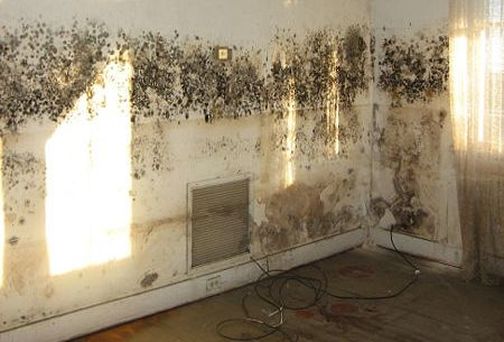DO YOU HAVE A MOLD PROBLEM?
IF YOU HAVE ANY SORT OF CHRONIC HEALTH ISSUES, DON’T
DISMISS THIS QUESTION WITHOUT READING TODAY’S POST
Although you may not realize it, mold is everywhere. Mold spores are a common component of household and workplace dust, and can be found on just about every surface in your home. This type of mold is not usually a problem for the majority of the population. But give mold the environment it needs to grow (high moisture content, nutrients, warm temperature, etc), and you will soon have a huge problem on your hands — quite possibly a nightmare you could never have even imagined (HERE). I know because I have witnessed first hand how mold has helped destroy some of my patient’s lives!
When mold spores are present in abnormally high quantities, they can present a serious health hazard to humans. Mold’s symptoms come in the form of hypersensitivity reactions to the spores themselves, but reactions to their mycotoxins (toxic chemical byproducts of molds) as well. Some of the more common health issues associated with mold exposure include………
- Allergic Reactions (Current research says that over half of all Asthmatics have RESPIRATORY ALLERGIES — one of the most common being mold.)
- Asthma (HERE)
- Coughing / Wheezing (HERE)
- Light Sensitivity (HERE)
- Rashes (HERE)
- Sugar / Starch Addiction (HERE)
- Nausea and other Digestive Problems (HERE)
- Chronic Fever (HERE)
- Headaches (including MIGRAINES)
- Eye Problems
- Sinus Congestion / Infections (HERE)
- A vast array of Respiratory Problems including Infections and Bronchitis (HERE)
- Fungal Infections of the Sinus, Skin, Lungs, and Digestive Tract with prolonged exposure (This is a form of DYSBIOSIS)
- Hypersensitivity Reactions of all kinds (A 2003 issue of The Journal of Occupational and Environmental Medicine / American College of Occupational and Environmental Medicine published a study called Adverse Human Health Effects Associated with Molds in the Indoor Environment saying that at least 5% of the American population is affected at some time in their life with Hypersensitivity to Mold.)
- Aspergillosis
- Immune Suppression / Autoimmunity (HERE)
- Neurotoxicity / Neurological Problems (HERE)
- Cancer (HERE) (Darn straight! For the fun of it, Google “Cancer Mold” or “Cancer Fungus” and prepare to be truly freaked out.)
- When water leaks or spills occur indoors – ACT QUICKLY. If wet or damp materials or areas are dried 24-48 hours after a leak or spill happens, in most cases mold will not grow.
- Clean and repair roof gutters regularly.
- Make sure the ground slopes away from the building foundation, so that water does not enter or collect around the foundation.
- Keep air conditioning drip pans clean and the drain lines unobstructed and flowing properly.
- Keep indoor humidity low. If possible, keep indoor humidity below 60 percent (ideally between 30 and 50 percent) relative humidity. Relative humidity can be measured with a moisture or humidity meter, a small, inexpensive ($10-$50) instrument available at many hardware stores.
- If you see condensation or moisture collecting on windows, walls or pipes ACT QUICKLY to dry the wet surface and reduce the moisture/water source. Condensation can be a sign of high humidity.
- Vent appliances that produce moisture, such as clothes dryers, stoves, and kerosene heaters to the outside where possible. (Combustion appliances such as stoves and kerosene heaters produce water vapor and will increase the humidity unless vented to the outside.)
- Use air conditioners and / or de-humidifiers when needed.
- Run the bathroom fan or open the window when showering. Use exhaust fans or open windows whenever cooking, running the dishwasher or dishwashing, etc.
- Reduce the humidity.
- Increase ventilation or air movement by opening doors and / or windows, when practical. Use fans as needed.
- Cover cold surfaces, such as cold water pipes, with insulation.
The most capable and knowledgeable person in the area for this sort of work is Chris Jungbluth of Environmental Services over in Springfield, Missouri (he is originally from the Raymondville area). What sets Chris’s business apart from others advertising similar services? Training, experience and certifications. He’s not one of those “experts” who took a weekend course, then hung out a shingle advertising “Mold Remediation”. Chris has a college degree in Environmental Services, and has been in the game for a very long time. Think your mold problem is bad? I guarantee he’s seen worse and successfully dealt with it. If you think mold might (might) be causing or contributing to your chronic health issues, give Chris a call
.
